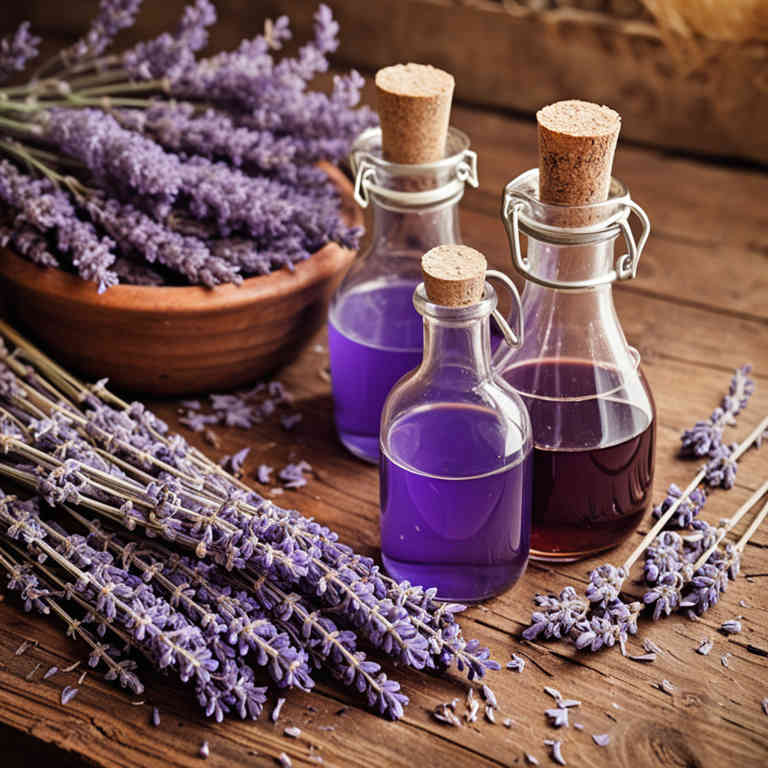Lavandula angustifolia syrup for medicinal use

Lavandula angustifolia syrup is a concentrated preparation made from the flowers of the lavender plant, typically harvested at the peak of their bloom.
This syrup is created by simmering the dried lavender flowers with honey or sugar to preserve their aromatic and therapeutic properties. In herbalism, it is valued for its calming effects and is often used to alleviate symptoms of anxiety, insomnia, and mild digestive discomfort. The soothing properties of lavender make it a popular choice for supporting emotional well-being and promoting relaxation.
It can be taken orally in small doses or used externally as a topical remedy for skin irritation or inflammation.
Uses
Lavandula angustifolia syrup has been used to soothe respiratory and digestive ailments for centuries.
Historically, it was valued in ancient Greece and Rome for its calming properties and was often used to treat anxiety and insomnia. In traditional herbal medicine, the syrup was also applied topically to ease muscle pain and skin irritations. Modern uses include its role in natural remedies for colds, coughs, and stress relief, supported by its mild sedative and antispasmodic effects.
Today, it is commonly found in aromatherapy and herbal supplements, reflecting its enduring popularity across cultures.
Benefits
Lavandula angustifolia syrup has health benefits such as promoting relaxation, reducing anxiety, and aiding in better sleep.
It is known for its calming properties, which can help alleviate symptoms of stress and tension. The syrup may also support digestive health by soothing the gastrointestinal tract. Its anti-inflammatory and antimicrobial properties can contribute to overall wellness.
This natural preparation is often used as a complementary therapy for emotional and physical balance.
Constituents
Lavandula angustifolia syrup active constituents include linalool, lavandulol, and terpenes, which contribute to its therapeutic properties.
These compounds are known for their calming and antispasmodic effects, making the syrup beneficial for stress relief and digestive comfort. The presence of flavonoids also supports anti-inflammatory and antioxidant activities. This herbal preparation is often used to alleviate symptoms of anxiety, insomnia, and menstrual cramps.
Its mild and soothing nature makes it suitable for a wide range of health applications.
Preparation
To make Lavandula angustifolia syrup, first gather 1 cup of dried lavender flowers, 2 cups of water, and 1 cup of honey or sugar.
Begin by boiling the water and adding the dried lavender flowers, then let the mixture steep for 15 minutes. Strain the liquid to remove the flowers and return the liquid to the stove, adding the honey or sugar and stirring until it dissolves completely. Cook the mixture over low heat for about 10 minutes, stirring occasionally, until it thickens slightly.
Finally, transfer the syrup to sterilized jars and store it in a cool, dark place.
Side Effects
Lavandula angustifolia syrup may lead to mild gastrointestinal discomfort, such as nausea or upset stomach, in some individuals.
It can also cause drowsiness or dizziness due to its mild sedative properties. Overconsumption may result in allergic reactions, including rash, itching, or difficulty breathing. Long-term use might interfere with certain medications, particularly those affecting the central nervous system.
It is important to consult a healthcare provider before using this preparation, especially for pregnant or breastfeeding women and individuals with pre-existing health conditions.